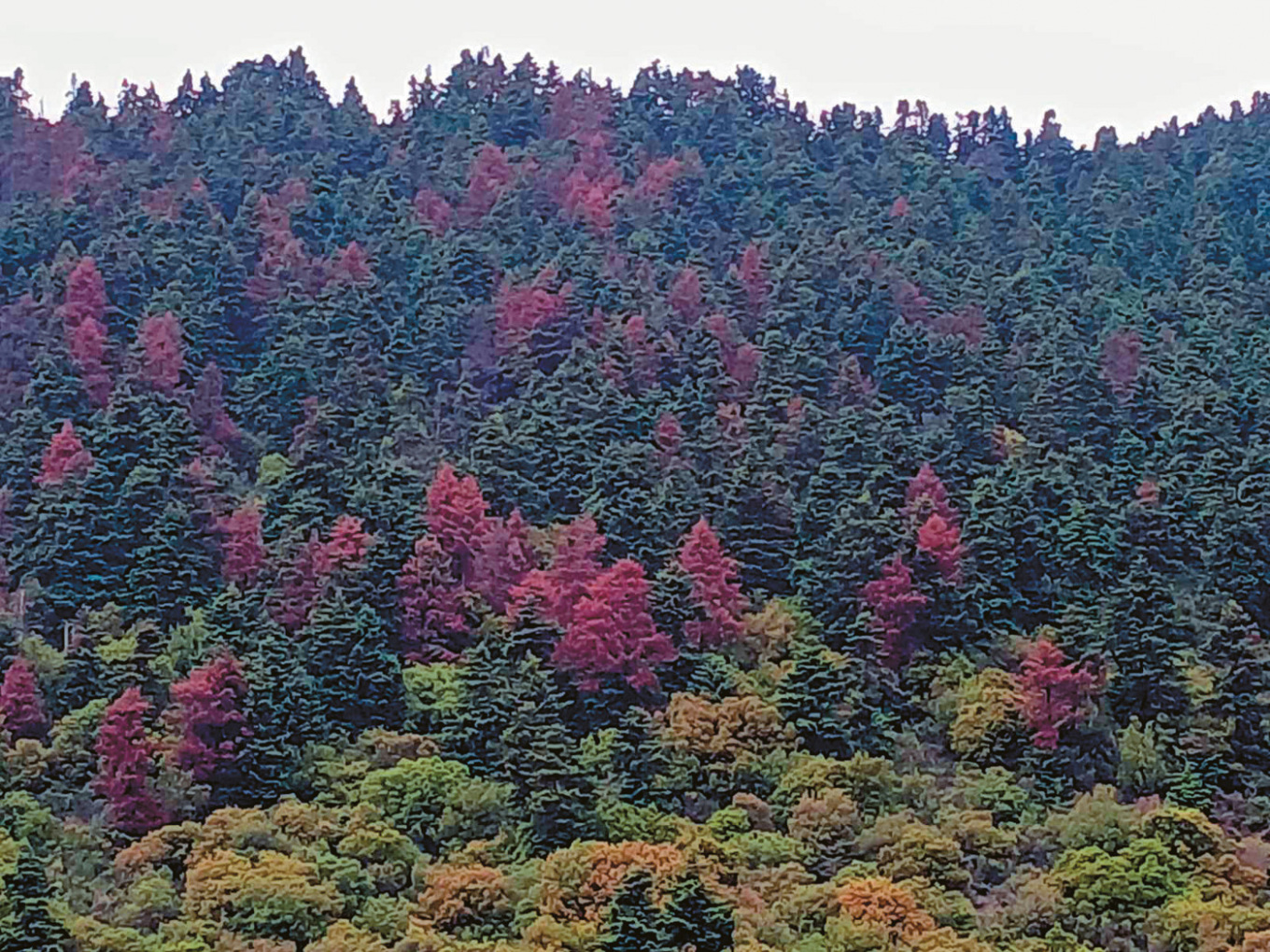Today is World Environment Day, and the fir forests and plane trees in central Greece are raising concerns. The trees are suffering from widespread drying, infected by harmful fungi and bark beetles. This alarming trend is closely tied to climate change, as rising temperatures and extended droughts create ideal conditions for these threats, ultimately drying out trees from their roots. The primary response to this issue appears to be logging affected trees to prevent further spread. However, given the favorable conditions for disease caused by the climate crisis, the risk of forest extinction remains high.
This issue is prevalent across all mountainous regions of Greece and has intensified in recent years in areas such as Tzoumerka, the Achelous Valley, and Agrafa, with lesser effects seen in Kitheronas, Helicon, parts of Epirus, and the Peloponnese.
Imported Disease
The disease affecting plane trees was first identified in 2003 in Messinia, where the fungus Ceratocystis platani (responsible for canker stain disease) was discovered in dying or dead trees. Analyses revealed that the strain present in Greece was identical to those in Italy, France, and Switzerland, indicating that the disease was likely imported from these countries, particularly Italy, where nurseries were sourcing trees. After its initial detection in Messinia, the disease spread throughout the Peloponnese, reaching Epirus, Thessaly, Central Greece, and Euboea.

The pathogenic fungus has decimated thousands of plane trees across Greece, many of which were centuries old, as well as younger trees, reshaping the landscapes of riparian areas. The spread of this fungus is primarily attributed to human activities involving excavation and tree-cutting tools. Canker stain disease develops within the wood, attacking roots, trunks, and branches, and the wood from infected trees is prohibited for use as firewood to prevent the disease from spreading. The severity of the problem has been underscored by Agrafa’s mayor, Alexis Kardambikis, who notes the alarming number of dead trees in stream beds and describes the dire situation in fir trees, as well as the massive decline of plane trees over the past few years. He emphasizes the profound ecological consequences of losing forests and the vital role of trees in maintaining ecosystems.
“The issue spans all of Central Greece where fir trees exist, and we worry that the infected plane trees may be beyond saving,” stated Ms. Katerina Kalantzi, a forester and Deputy Regional Governor for Mountain and Forest Policy in Central Greece.
According to her, the die-off of plane trees has been noticeable in Central Greece for nearly a decade, while hotspots for infection exist wherever fir trees are found. The region has sought assistance from the Forest Research Institute of ELGO “Dimitra,” and its Research Director, Mr. Dimitris Avtzis, indicated that laboratory analyses attribute the die-off to a surge of wood-boring and bark beetles.
Logging
To mitigate the spread of these pests, the Forest Research Institute of ELGO “Dimitra” recommends timely logging and removal of dead, especially infected, pines and firs. This intervention would help reduce the population of insects and eliminate their food source. According to Ms. Kalantzi, the best time for this approach is from autumn to spring when the insects are sheltered under the bark and within the wood, allowing for more effective population control. Additional measures to prevent disease spread include stringent controls on nursery imports and thorough disinfection of chainsaws and tools used in logging to avoid transferring pathogens from affected to healthy areas.
Additional Measures
ELGO “Dimitra” also suggests that in areas difficult to access, only the bark from infected trees should be removed. This exposes the bark beetles to external factors that can adversely affect their population. This recommendation was included in a report delivered to the Region of Central Greece in May, highlighting the critical situation regarding the die-off of firs, pines, and plane trees—especially in Fthiotida, Evrytania, Phocis, and Boeotia. Ms. Kalantzi noted that research results were communicated to the Ministry of Environment and Energy, emphasizing the need for cooperation with the Forest Policy Implementation Inspectorate and local committees to secure necessary funds for swift action against the crisis.
Spread
The issue of tree die-off is not confined to Greece; canker stain disease, which threatens plane trees, has been documented in various Mediterranean countries. Similarly, the die-off of fir trees (Abies cephalonica) has been observed in multiple locations in recent years, displaying symptoms like discoloration, branch withering, and eventual death. It has been established that climate change, characterized by increased temperatures and prolonged droughts, exacerbates the vulnerability of fir forests to diseases and pests.

Infected fir trees are identifiable by their distinctive reddish-brown hue. Laboratory analysis indicates that the die-off results from an increase in wood-boring and bark beetle populations.
The fungus Ceratocystis platani, responsible for the canker stain disease affecting only plane trees, was likely introduced to Europe from North America, transported via wooden crates during World War II by American troops to Italy and France.
The Request to the Commission
“The widespread tree die-off seems to be linked to both climate change and biotic factors such as bark beetle infestations and pathogenic fungi,” highlighted PASOK MEP Sakis Arnaoutoglou, who raised the issue with the European Commission. “The extensive infestation destabilizes forest ecosystems, diminishes biodiversity, raises wildfire risks, and accelerates desertification,” he remarked. He urged the Commission to monitor this phenomenon in sensitive EU areas, mobilize funding for research and restoration of affected forests, and enhance collaboration with member states to develop early warning and intervention systems for protection against the impacts of the climate crisis. “The loss of trees is not merely a natural occurrence; it serves as a warning for ecological balance, the quality of life in mountainous regions, and the future of nature across Europe.”
Ask me anything
Explore related questions

















